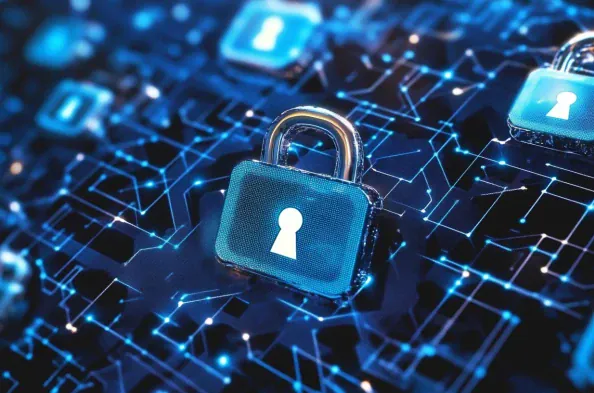Quantum computing is not a distant dream now, but it is gradually becoming a reality. IBM, Google, Microsoft, and other tech giants have made substantial progress in the field. By now, quantum computing has emerged as more than just a scientific breakthrough; it has become an industry game-changer. This technology compels businesses to reassess their approach to cybersecurity and data protection. Quantum computing poses an existential challenge to traditional encryption methods, putting sensitive data at risk. Organizations that fail to prepare for this shift may expose themselves to significant cyber threats.
1. Quantum Threat to Encryption
The power of quantum computing lies in its ability to process information in ways that traditional computers cannot. While classical computers rely on bits (either 0 or 1), quantum computers use qubits that can exist in multiple states simultaneously due to the property known as superposition. Entanglement allows qubits to be linked in such a way that changing one instantly affects the other, giving quantum computers an edge in solving complex mathematical problems faster than modern supercomputers.
This advancement sounds promising, but it poses a major cybersecurity risk. Modern encryption standards, such as RSA (Rivest-Shamir-Adleman) and ECC (Elliptic Curve Cryptography), rely on the difficulty of factoring large numbers or solving discrete logarithms. Quantum computers, by leveraging algorithms designed for these types of problems, can render existing encryption methods obsolete. One major concern is the “harvest-now, decrypt-later” strategy. Cybercriminals may already be gathering encrypted data, intending to decrypt it once quantum computers become more powerful, putting sensitive information at risk in the future.
2. Transition to Post-Quantum Cryptography
Researchers are currently focused on developing quantum-resistant encryption methods known as post-quantum cryptography (PQC). These algorithms are designed to be secure against both classical and quantum attacks. A promising approach in PQC is lattice-based cryptography, which relies on mathematical problems that quantum computers are expected to find difficult to solve. Other viable solutions include hash-based, code-based cryptography, and multivariate quadratic equations.
Organizations must begin transitioning to quantum-safe encryption to mitigate these risks. Governments and cybersecurity bodies, such as the National Institute of Standards and Technology (NIST), have started standardizing PQC algorithms. These efforts aim to encourage businesses to adopt quantum-resistant techniques before quantum computers become commercially viable. Early adoption of PQC will be critical in safeguarding data against potential quantum threats.
3. Steps Businesses Need to Take in 2025
Conduct a Cybersecurity Assessment
Organizations should assess their current encryption protocols and identify areas vulnerable to quantum attacks. IT teams need to analyze systems, databases, and applications that rely on RSA, ECC, or other quantum-vulnerable cryptographic techniques. Additionally, businesses should evaluate their supply chain security and ensure that third-party vendors also meet quantum-safe standards. Upon identifying these risks, organizations must prioritize remediation strategies to protect their most sensitive data.
Implement Post-Quantum Cryptographic Techniques
Transitioning to PQC should be a phased process, with a primary focus on critical systems first. NIST’s upcoming post-quantum encryption standards will provide a roadmap for businesses to follow. Initially, companies should pilot PQC algorithms in controlled environments for testing. If successful, these algorithms can then be rolled out on a larger scale. This gradual approach ensures a smooth transition to quantum-resistant encryption while minimizing disruptions to normal operations.
Educate Employees on Quantum-Safe Practices
Cybersecurity today is not just a technological challenge; it is also a human challenge. Employees need to be educated on the implications of quantum computing and trained to manage and maintain PQC protocols. Regular training sessions, workshops, and awareness programs should be essential components of strengthening a security-first mindset across all levels of an organization. Ensuring that employees understand their role in maintaining cybersecurity can significantly augment technical measures.
4. Ongoing Strategy for Quantum Resilience
Beyond immediate steps, businesses should establish a long-term strategy for quantum resilience. This involves regularly updating cryptographic protocols as new threats and solutions emerge. Collaborating with cybersecurity experts to monitor advancements in quantum computing is crucial for staying ahead of potential risks. Furthermore, it is prudent for organizations to work with industry leaders to share insights and best practices for dealing with quantum threats. Keeping pace with the latest developments will be essential for maintaining robust security.
5. Quantum Computing Opportunities
While the risks of quantum computing are clear, its potential benefits should not be overlooked. Quantum technology is set to revolutionize various fields, including materials science, pharmaceutical research, logistics, financial modeling, and more. Businesses that invest in quantum computing capabilities now may gain a significant competitive edge. Quantum computing can optimize operations and drive innovation in ways previously unimaginable. For instance, quantum computers can analyze massive datasets at unprecedented speeds, enabling breakthroughs in drug discovery, climate modeling, and artificial intelligence.
Quantum computing can also enhance risk assessment models, improve fraud detection, and optimize investment strategies in the finance sector. Companies that harness the power of quantum computing while ensuring their cybersecurity measures are up to date will be best positioned for future success. The synergy between quantum capabilities and resilient cybersecurity measures will be a key differentiator in the evolving technological landscape.
6. The Path Forward
Quantum computing, once a distant ambition, is now on the verge of becoming a tangible reality. Major technology companies like IBM, Google, and Microsoft have made remarkable strides in this groundbreaking field. Today, quantum computing represents more than just a scientific marvel; it’s poised to be an industry disruptor. This advanced technology forces businesses to rethink their cybersecurity and data protection strategies comprehensively. Quantum computing presents a formidable challenge to traditional encryption methods, potentially compromising sensitive data. Companies that fail to adapt to these advancements could find themselves vulnerable to substantial cyber risks. The impending shift makes it crucial for organizations to invest in quantum-safe security measures. Embracing this cutting-edge technology requires both awareness and preparedness to mitigate possible threats effectively. Through strategic planning and innovative solutions, companies can safeguard their data and thrive in a quantum-powered future.






